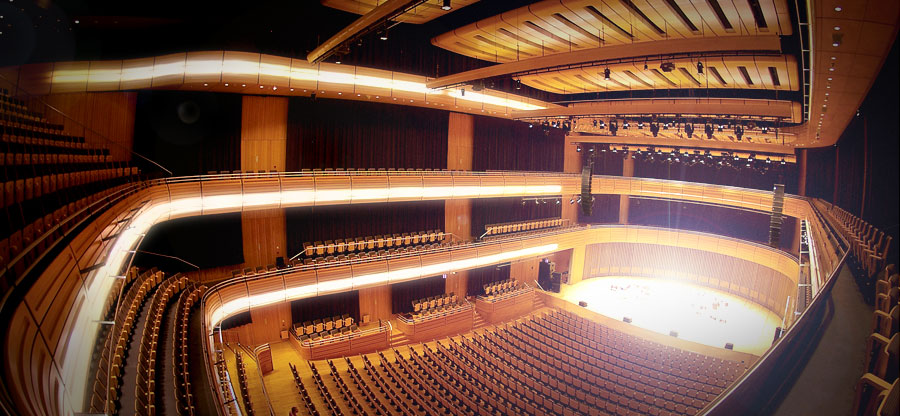RCF upgrades the sound of the Sage Gateshead
The Sage Gateshead — an iconic multi-arts building in the north-east of England, which originally cost £70m to construct — this year celebrates its tenth year.
To celebrate its landmark birthday the venue has upgraded the sound system in its 1700-capacity main Hall One with the installation of an RCF HDL 20-A line array by local contractors (and long time RCF rental partner), Nitelites.
The move follows a period of careful evaluation by the facility’s Head of Technical Operations, Chris Durant and his team, during the many occasions the HDL20-A has been flown on a temporary basis to support the house system.
Home to Royal Northern Sinfonia, and host to a vast concert agenda that includes jazz, folk, country and rock the original beam steering system had rarely kept pace with the Sage’s promotional ambitions and so Nitelites found themselves increasingly hiring in their RCF TT+ and HDL rigs.
Eventually Nitelites’ MD, Jamie Moore proposed that a flown HDL 20-A be installed on a permanent basis — both to save the Sage Gateshead hire costs and to enable the system to be purpose tuned via a series of preset scenes accessed via a custom panel.
Said Nitelites co-director Andy Magee, “With HDL we were confident we could get even coverage around the building, whether for speech or classical. The system is so easy to deploy, quick to rig and fast to wire.”
The PA is designed to cover the ground floor, two balcony tiers and is split into 12 zones. Nitelites detailed 12 HDL20-A enclosures for each flank, rigged on a flying frame which will take up to 16 elements.
The rest of the complement comprises three HDL 20-A a side as portable ground stack on custom dollies, atop a SUB 8004. A separate stack features three SUB 8006s in a reverse cardioid pattern (one rear facing), with an HDL 10-A on top. Two HDL 10-As are also used for under-balcony infill and four as front lip fills. On the sides of the main hang for outfills are four discreet RCF TT08s.
Chris Durant believes that Nitelites’ attention to detail in tuning the system has enabled them to get an additional 30% from the system. “We’ve had pretty much every big system in here and our new in-house RCF house rigs sounds better because temporary systems have to be set up so quickly; this been tuned to within an inch of its life.”
He presented Nitelites with a matrix containing different performance scenarios for which gain structure presets were created. Via the DSP, Sage Gateshead can turn zones on and off in the PA at will. “It’s far more efficient than changing the angles of the boxes every time we needed a new configuration,” Durant says.
He notes, “The great thing about the HDL 20-A is that it goes down to 55Hz so for jazz and classical there are no subs at all. In fact the first time I heard it I thought our subs had been switched in by mistake.”
At the same time he highlights other advantages of HDL 20-A. “It’s also easy to groundstack and the position of the fly frame is mirrored on the subs so it’s easy to interlock; it’s convection cooled so there is no buzzing — which is vital in a critical room where a low noise floor is required. It’s also very efficient energy wise, and we don’t need to run extra power in.”
All of which should future-proof performance requirements for the foreseeable future. Summing up the Sage Gateshead installation, Chris Durant says, “We are now making engineers aware that they can leave their kit on the truck.”
RCF’s Northern sales manager Mick Butler adds that the system’s exposure to visiting sound engineers will be invaluable. “It really brings into focus the power of RCF’s pro touring range,” he says.

